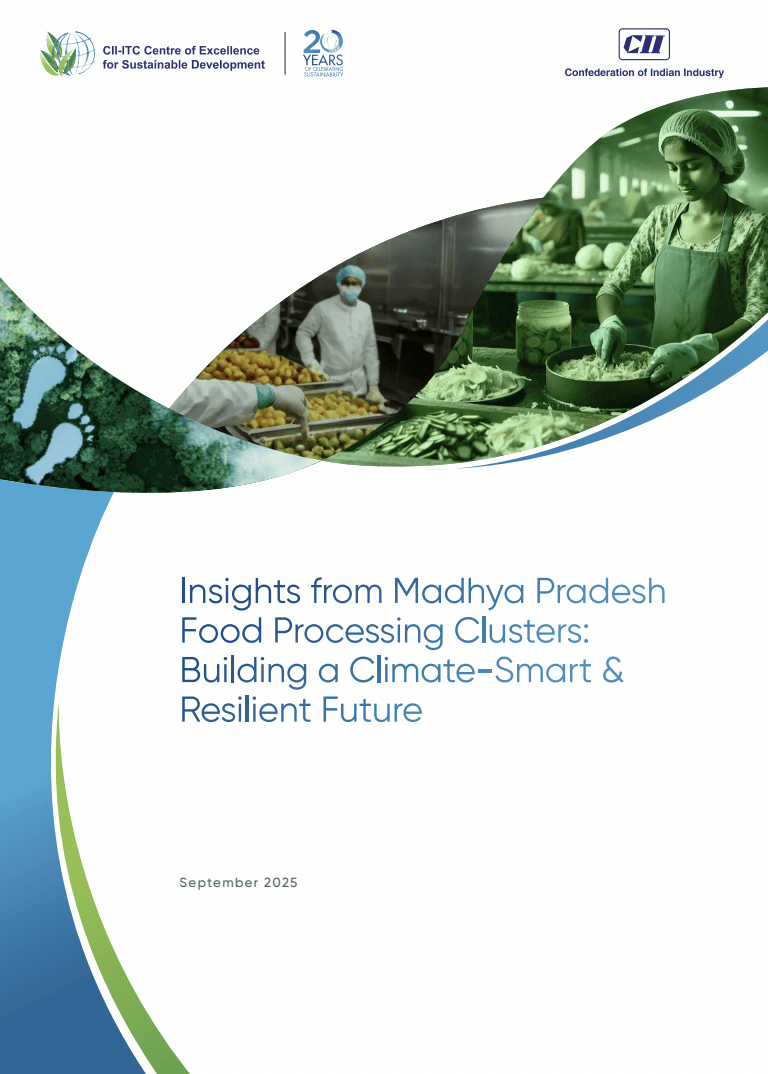
Insights from Madhya Pradesh Food Processing Clusters: Building a Climate-Smart & Resilient Culture

Integrating Nature-related Aspects in Business Responsibility & Sustainability Reporting (BRSR) Disclosures using the Taskforce on Nature-related Financial Disclosures (TNFD) Recommendations
CII Policy Watch – Focus: ESG

Insights from Madhya Pradesh Food Processing Clusters: Building a Climate-Smart & Resilient Culture



